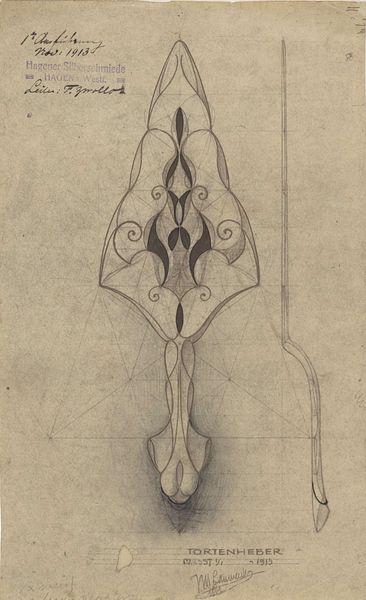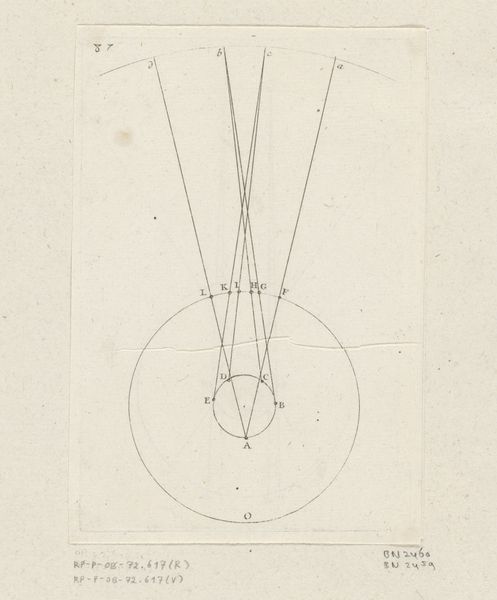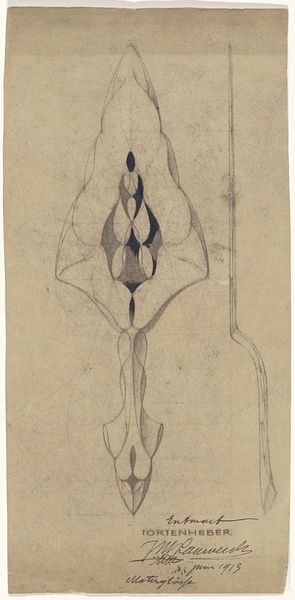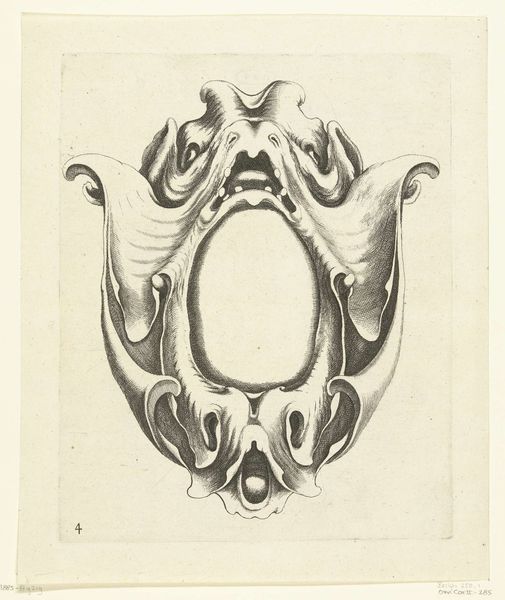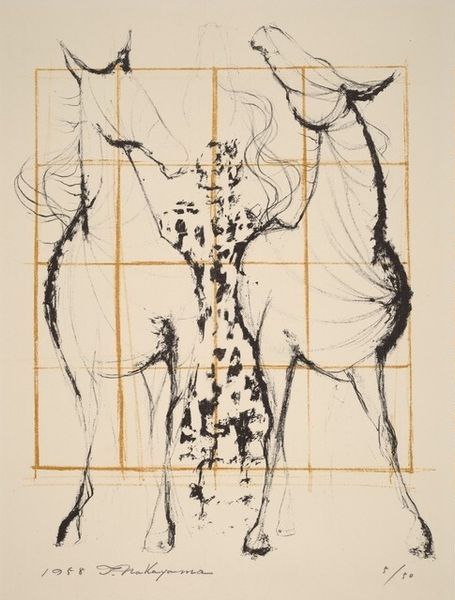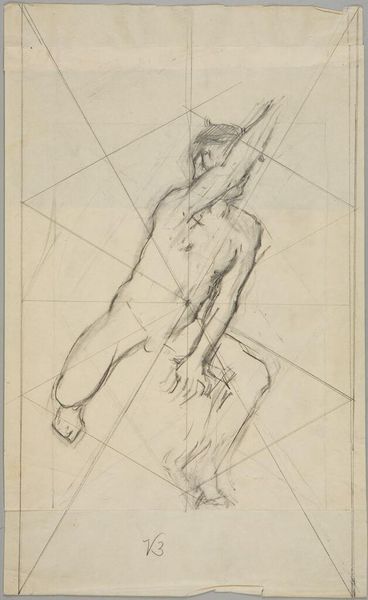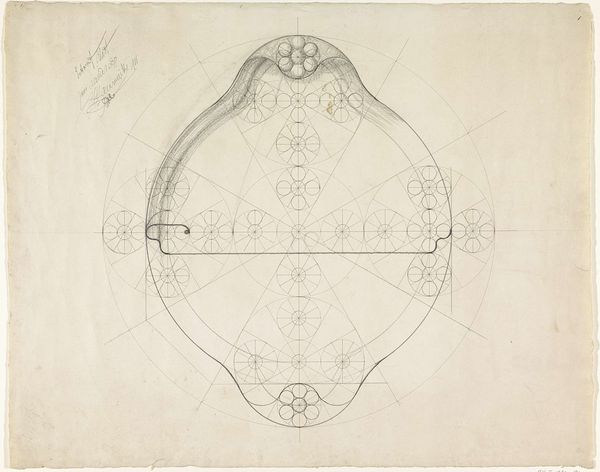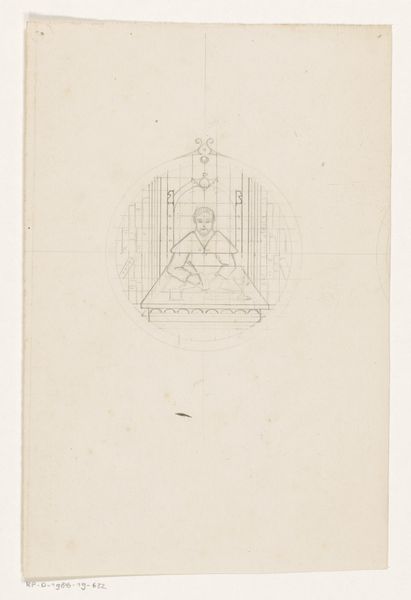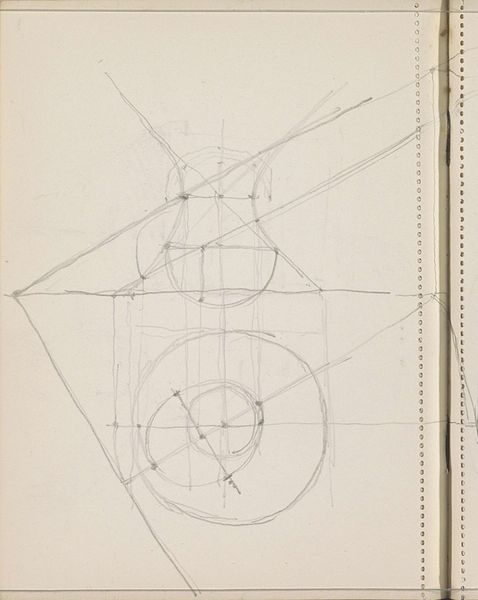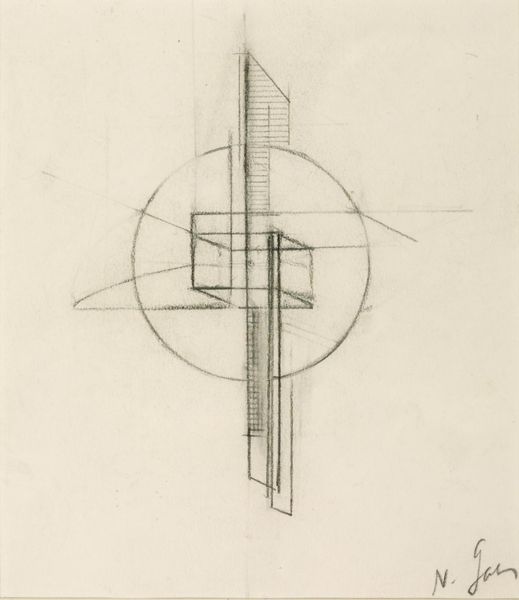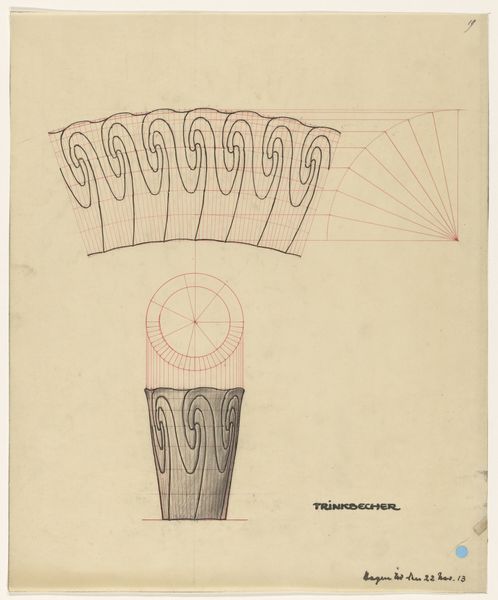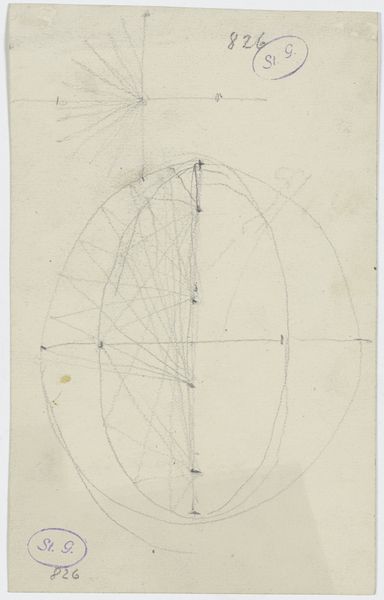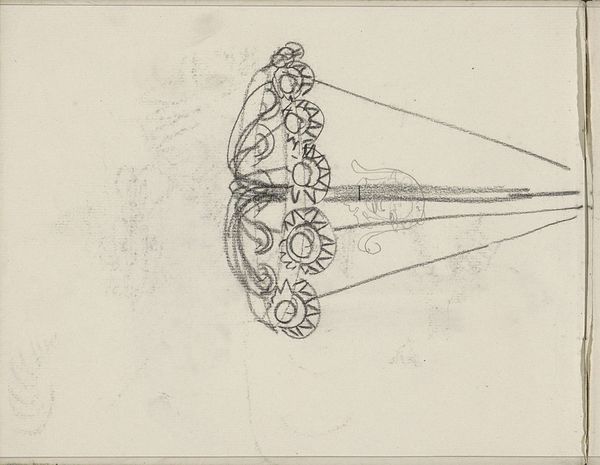
#
toned paper
#
light pencil work
#
quirky sketch
#
pen sketch
#
incomplete sketchy
#
personal sketchbook
#
ink drawing experimentation
#
pen-ink sketch
#
sketchbook drawing
#
sketchbook art
Dimensions: height 348 mm, width 209 mm
Copyright: Rijks Museum: Open Domain
Curator: This intricate drawing is a design for a cake server, conceived by Mathieu Lauweriks in 1913. Look closely, and you'll see the artist's delicate linework and the preparatory geometric underpinnings. Editor: It has a striking, almost architectural feel to it. The geometric shapes and symmetrical design create a sense of order, but the hand-drawn nature adds a layer of vulnerability. Curator: Precisely. Lauweriks was deeply involved in theories of geometric systems and their application to design and architecture. The very materiality here—the pencil on paper—speaks to the process of translating abstract concepts into tangible forms for use in daily life. Editor: The symmetry speaks to a moment of hope around technological advancements perhaps providing equality. A slice of cake, regardless of its layers, distributed to all the layers of society. But, let’s not disregard the socio-economic context. Who gets cake and who designs the means to share it? This makes me question the labor conditions of both the person creating the artifact as well as the ones in a position of serving it. Curator: An important point. The act of designing and crafting such an object was a specialized skill that highlights the division of labor inherent in early 20th-century society. But Lauweriks aimed to elevate everyday objects to art forms. I’d say, for Lauweriks, craft was not separated from design—it was a form of intellectual labor rooted in geometric knowledge. Editor: Yes, though sometimes I find these efforts to democratize art also reinforced the very structures of privilege they perhaps hoped to dismantle. Curator: A tension we often see! Looking closer at the design, I notice the deliberate repetition of shapes, suggesting a potential for mass production. It hints at the evolving relationship between art, craft, and industry in the early 20th century. Editor: It invites reflection, doesn't it, on the utopian ideals present at the time. This reminds us how critical inquiry serves to disrupt such grand narratives to make way for change. Curator: Ultimately, what began as design resulted in deeper understanding. Editor: And potentially a sugary, and delicious one at that!
Comments
No comments
Be the first to comment and join the conversation on the ultimate creative platform.
